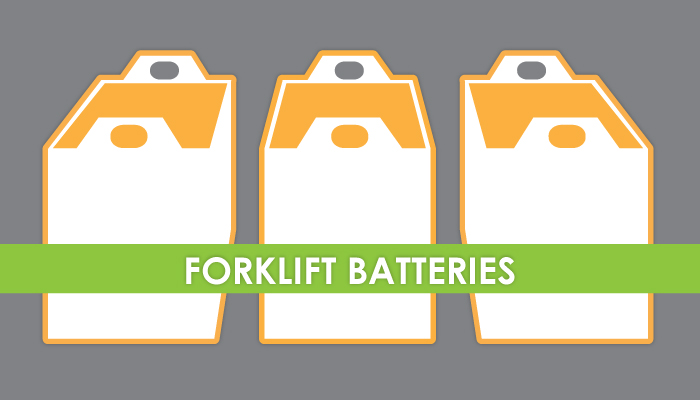We use cookies to make your experience better. To comply with the new e-Privacy directive, we need to ask for your consent to set the cookies. Learn more.
Are Lithium Ion Forklift Batteries Catching On?
It’s safe to say that we live in the era of lithium-ion batteries. They power our phones, our laptops, our tablets, and even our hoverboards (sometimes disastrously).
You might notice a stunning omission to that list. Nearly 10 years ago, the first lithium-ion forklift battery propelled an experimental lift truck across the floor of a major Japanese manufacturer's facility.
Fast forward to 2016: Where are all the lithium-ion forklift batteries? We can’t predict the future. But for now, the very attributes that make lithium-ion batteries so powerful in the electronics field also render them useless in the most common lift trucks at work in warehousing, construction, and manufacturing facilities.
The Advantages of Li-Ion Batteries — And Will They Work for Counterbalance Forklifts?
What's so great about lithium ion batteries, as opposed to their lead-acid counterparts? Two things. First, they offer high-density storage. A li-ion battery stores about three times the energy of a comparable lead-acid battery.
Second, li-ion batteries are light. Compared to a lead-acid battery, they weigh virtually nothing at all. That's what makes them so perfect for handheld devices, like ultra-slim cell phones. However, lightweight batteries are all wrong for most contemporary forklifts.
Counterbalance forklifts remain the most common type of industrial trucks on the market. As of 2014 (the last year that the Industrial Truck Association produced statistics), counterbalance lift trucks captured 57 percent of the total lift truck market.
Manufacturers provide counterbalance forklifts with both power and essential ballast with a single technology: lead-acid forklift batteries. With the advances in battery handling technology over the decades, owners of electric forklift fleets can efficiently maintain a fleet of high-performance lead-acid batteries.
If a manufacturer produced a counterbalance lift truck with an electrical system designed for a li-ion battery, they would have to add thousands of pounds of ballast. Without providing some purpose for the materials that produce that weight, you would have one inefficient machine. Who wants a few thousand pounds of dead weight adding bulk to a lift truck? 
Industrial trucks aren't laptops. Lightweight, high-density storage simply doesn't work when you need ballast to keep trucks from tipping over every time they lift a load. The industry solved this problem long ago, and despite the promises of futurists, a better solution hasn't come along yet.
Potential Uses of Lithium-Ion Batteries in Industrial Trucks
That's not to say that li-ion batteries have no place in the material handling industry. On the contrary, they offer great advantages for walkie pallet trucks and other vehicles that don't rely on ballast as an essential design element.
Li-ion batteries charge quickly, they don't let off gas while charging, and they don't need the cool-down intervals required by lead-acid batteries. That's all pretty attractive.
However, given that the watt-per-hour cost of li-ion remains around five times that of lead-acid, we’ll have to see some big changes from forklift manufacturers before li-ion overtakes the venerable lead-acid forklift battery. For now, lead-acid is the main stay.
References:
Gooley, Toby. "The allure of lithium-ion." DCVelocity. Agile Business Media, LLC., 16 July 2015. Web. 26 July 2016.
"Market Intelligence." IndTrk. Industrial Truck Association, 2015. Web. 26 July 2016.
"Lithium-ion batteries ready for the commercial lift truck market." DCVelocity. Agile Business Media, LLC., 1 Apr. 2015. Web. 16 July 2016.
